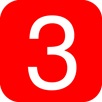Number 17: Mysterious and Special
Let’s start by some facts regarding 17 as a prime number. A prime is a whole number who has only two divisors: 1 and itself. 2 is the smallest prime. 3, 5, 7 .. are primes too. 6 = 2 x 3 is not a prime: 6 has four factors: 1, 2, 3, 6.
> 17 is the 7th prime number.
2, 3, 5, 7, 11, 13, 17 : Yeah, the seventh prime is 17.
> 17 and 19 are twin primes: twin primes are two consecutive odd numbers who are both primes.
> This year is 2017. Both 17 and 2017 are prime numbers. But since 117 = 3 × 3 × 13, 2117 = 29 × 73: neither 117 nor 2117 is a prime number.
Here are some classical results to which are linked two big names (both mathematicians) : Fermat (Pierre de Fermat) and Gauss (Carl Friedrich Gauss).
> 17 is a Fermat prime. Fermat numbers are in the form of 2 2 n (meaning: 2 raised to the 2n power) as n = 0, 1, 2, .. .. When setting n = 2, we get the third prime 17.
Carl Friedrich Gauss discovered that heptadecagon (17-sided polygon) is constructable using compass (for drawing circles) and ruler (for drawing lines) only. Any regular polygon with number of sides being a Fermat prime number can be such constructed (as Gauss gave the method of construction and the proof).
17 is everywhere – from Sudoku game to Irregularity Distribution
> (An Interesting Claim about a soduko game) Have you played a sudoku game? It is a puzzle of 9-by-9 (=81) cells, each cell supposed to be filled with a digit chosen from 1 to 9. Some entries of the 81 cells are given prior, then a player’s task is to fill remaining entries


such that each row, each column, and each 3-by-3 smaller cell must contain digits from 1 to 9, each appearing exactly once. If such conditions are all met, the fill-in is called a (proper) solution.
See above figures for a given sudoku game (with some fixed entries given) and one of solutions.
Regarding the game, there is a claim:
If a sudoku game leads to one unique solution, then a necessary condition is, at least 17 entries must have been given at the very beginning of the game.
(Otherwise, the sudoku game cannot have a unique solution.)Let us see an example. If there is a 9-by-9 sudoku game where you see only 15 cells filled (with numbers from 1 to 9), then you must be able to work out two or more different solutions (or none at all).
The claim was proved quite recently — in 2012.
> For the problem of Irregularity of (1/n)- distribution events, the solution exists for n<=17.
(Details are to be posted soon)
We conclude with a few trivia.
> (Sum of Squares and Cubes)
17 = 32 + 23 = 42 + 13
That is, 17 can be written as the sum of one perfect square number and one perfect cube number in two different ways. 1st way uses numbers 2 and 3 only; 2nd way uses numbers 1, 2, 3, 4 resp.
Among all that possess the feature (as a prime and can be written into such sums), 17 is the smallest.
> (17 is the least random number)
In a psychology test, when asking to write down a random number between 1 and 20, most people chooses 17 – such got the name “the least random number”.
> (17 – as in Seventeen: in album, name of bands, journals, movies and music)
In countless albums, bands, movies and magazines, journals, you’ll find 17 as part of the title or name. As I did a search, several songs immediately pop up:
- “17” (Sky Ferreira song)
- “17” (Yourcodenameis:Milo song)
- “17 Again”, a song by Eurythmics
- “17 år”, a song by Veronica Maggio
- “17 Crimes”, a song by AFI
- “17 Days”, a song by Prince
The reason is mysterious, but that age 17 as youth curiosity and restlessness may have played a role.
>(number morphing and factoring)
17 x 71 = 1207 -> 2017
Reverse the procedure: from 2017 shuffle the digits we can get 1207 — we call that number morphing, and then we are to factor 1207 to 17 x 71.
Wow, That’s Seventeen. Apart from something deep (like Gauss’s results), we are here Just for Fun!


